d (→Exercises) |
(→EXCERCISE 07 "More about Textures") |
||
| Riadok 195: | Riadok 195: | ||
=== EXCERCISE 07 "More about Textures" === | === EXCERCISE 07 "More about Textures" === | ||
| + | 21.11.2016 | ||
* Generated/procedural textures | * Generated/procedural textures | ||
* Specular maps | * Specular maps | ||
Verzia zo dňa a času 22:57, 20. november 2016
Modelling and Rendering Techniques (Course Materials)
Obsah
- 1 Modelling and Rendering Techniques (Course Materials)
- 1.1 Grading
- 1.2 What you Need to Pass
- 1.2.1 Oral Examination
- 1.2.2 Materials to read
- 1.2.3 Useful links
- 1.2.4 Lesson01 "Human visual system, Illusions"
- 1.2.5 Lesson02 "Photographic Effects, HDR and Tone Mapping"
- 1.2.6 Lesson03 "Three dimensional modeling"
- 1.2.7 Lesson04 "Three dimensional transformations"
- 1.2.8 Lesson05 "Representation of solids"
- 1.2.9 Lesson06 "Functional representation"
- 1.2.10 Lesson07 "Test (midterm) 2"
- 1.2.11 Lesson08 "Computational topology of polygonal surfaces"
- 1.2.12 Lesson09 "Applied computational topology"
- 1.2.13 Lesson10 "Surface classification via topological surgery"
- 1.2.14 Lesson11 "Surface classification via topological surgery II"
- 1.2.15 Lesson12 "Aliasing, Antialiasing"
- 1.2.16 Lesson13 "Last lecture"
- 2 Exercises
- 2.1 Evaluation
- 2.2 EXCERCISE 00 "Introduction"
- 2.3 EXCERCIS E01 "Blender Basics"
- 2.4 EXCERCISE 02 "HDR and Mesh Modelling Fundamentals"
- 2.5 EXCERCISE 03 "Mesh Smoothing and Modifiers"
- 2.6 EXCERCISE 04 "F-Rep, CSG and Curve modelling"
- 2.7 HOME WORK
- 2.8 PROJECT 01
- 2.9 EXCERCISE 05 "Materials and Lights"
- 2.10 EXCERCISE 06 "Texturing and Texture Coordinates"
- 2.11 EXCERCISE 07 "More about Textures"
- 2.12 PROJECT 02+03
Lecture Monday 8:10 M-XII Exercise Tuesday 13:10 M-XII
Grading
No make-up exams will be given for missed tests. All the assignments should be turn in by the designated due date. To pass this course all the course requirements must be SATISFACTORILY completed > 30% of each problem set.
What you Need to Pass
- Attend lessons. One missed +0 points. 2 missed 0 points, 3 missed 0 points, 4 and more is Fx.
- Project and exercise (mandatory, 50 points).
- Solve all homework problems (mandatory each one >=30%, 20 points)
- Pass final term (mandatory, 10 points) You will need to solve several problems discussed during lessons.
- Pass oral/written exam: (optional, +20 points) If you feel you are better, convince me !
- Summary
- Attendance = 0 or -100 (Fx)
- Homework = +20..7 or +6..0 (Fx)
- Project = +50..0
- Mid term = +10..0
- Final term = +20..0
- Oral/written exam = +20..0
- Grades
- A = 92-100
- B = 84-91
- C = 76-83
- D = 68-75
- E = 60-67
- Fx = 0-59
Oral Examination
To the oral examination all the above requirements must be SATISFACTORILY completed.
Materials to read
- Michael Henle, "A Combinatorial Introduction to Topology"
- J. O'Rourke, "Computational Geometry in C"
- IA. T. Fomenko and T. L. Kunii, "Topological Modeling for Visualization"
Useful links
Lesson01 "Human visual system, Illusions"
Lecture notes: [pdf], Color theory: [pdf]
Reading(prepare 3 questions and the core idea of article): R. Ďurikovič and K. Kolchin. Physically-based model of photographic effects for night and day scenes, Journal of Three Dimensional Images, 3D Forum Society, vol. 15, No.4, pages 119-124, 2001. [pdf]
Lesson02 "Photographic Effects, HDR and Tone Mapping"
Lecture notes: [pdf]
Reading evaluation.
Lesson03 "Three dimensional modeling"
Lecture notes: [pdf]
Demo animation: R. Ďurikovič, K. Kaneda, and H. Yamashita. Dynamic contour: a texture approach and contour operations. The Visual Computer, 11(6), pages 277-289, May 1995. [pdf]
Lesson04 "Three dimensional transformations"
Lecture notes: [pdf]
Demo animation: R. Ďurikovič, K. Kaneda, and H. Yamashita. Imaging and modelling from serial microscopic sections for the study of anatomy. Medical & Biological Engineering & Computing, 36(5), pages 276-284, 1998. [pdf]
Lesson05 "Representation of solids"
Lecture notes: [pdf]
Midterm 1 + questions from the following articles.
Demo animation: Roman Ďurikovič, Silvester Czanner, Julius Parulek and Miloš Šrámek. Heterogeneous modeling of biological organs and organ growth. In book: Alexander Pasko, Valery Adzhiev, and Peter Comninos. LNCS 4889: Heterogeneous Objects Modeling and Applications. Springer Press, Berlin, 2008. [pdf]
Lesson06 "Functional representation"
Lecture notes: [pdf]
R. Ďurikovič. Growth simulation of digestive system using function representation and skeleton dynamics, International Journal on Shape Modeling, vol. 10, No.1, pages 31-49, World Scientific Publishing Company, Singapore, 2004.[pdf]
Lesson07 "Test (midterm) 2"
Demo animation: Roman Ďurikovič and Zuzana Kúkelová. Sketch-based modelling system with convolution and variational implicit surfaces, Journal of the Applied Mathematics, Statistics and Informatics, University of Saint Cyril and Metod Press, Trnava, Slovakia, vol. 4, No.1, pages 101-108, 2008.
Lesson08 "Computational topology of polygonal surfaces"
Lecture notes: [pdf]
Demo animation: Y. Wakabayashi and R. Ďurikovič. Modeling bonsai tree using positional information, Joint Convention Record of Tohoku Chapter of the Electrical and Information Engineers, No. 2I19, Yonezawa, Japan, pages 341, 2002.[pdf]
Lesson09 "Applied computational topology"
Lecture notes: [pdf]
Solving problems 7P 1~7
Lesson10 "Surface classification via topological surgery"
Lecture notes: [pdf]
Lesson11 "Surface classification via topological surgery II"
Lecture notes: [pdf]
Solving problems 8P 1~4
Lesson12 "Aliasing, Antialiasing"
Lecture notes: [pdf]
Lesson13 "Last lecture"
Final exam!
Exercises
guide: Adam Riečický
Monday 16:30 I-H6
The exercises will be focused on practical approach of modelling and rendering using Blender. Evaluation consists of three individual projects covering exercised topics. Also, a short presentation from selected topic will be required from each student.
Evaluation
20p - Attendance ( 10x2p )
45p - 3D Modelling Project ( 3x15p )
35p - Presentation (compulsory)
EXCERCISE 00 "Introduction"
19.9.2016
- Information slides
- Download the latest version of Blender from blender.org
EXCERCIS E01 "Blender Basics"
26.9.2016
- Assigning presentation topics
- Introduction to Blender, workspace, 3D view manipulation, objects and their transformations,
- For help see Blender Shortcuts and Controls pdf
EXCERCISE 02 "HDR and Mesh Modelling Fundamentals"
4.10.2016
- Find Simpsons 1/3 rule in a book at page 104
- Mesh edit mode, mesh manipulation
EXCERCISE 03 "Mesh Smoothing and Modifiers"
11.10.2016
- Smooth/Flat shading vs mesh subdivision
- Mirror and Subdivision surface modifiers
EXCERCISE 04 "F-Rep, CSG and Curve modelling"
25.10.2016
- Examples of F-rep http://hyperfun.org/FRep/
- Blobby objects and CSG in Blender [1], [2], [3]
- Editing curves in blender, screw modifier
HOME WORK
- Assignment of homework: [pdf]
- Deadline is monday lesson 7.11.2016
- RGB to HSL color space conversion:
- read more about color spaces in book (e.g. Moderní počítačová grafika)
- use RapidTables website for online conversion and formulas (detailed calculation)
PROJECT 01
- Deadline is 13.11.2016 23:59
Select and create 4 models using the techniques we’ve learned.
Models: light bulb, vine glass, mug, bottle, candle holder, table, chair, corkscrew, lamp, screw, book
Compulsory techniques: extrusion, loop cutting, curves, boolean modifier
Tips:
- Find reference photos and use them as a template
- Use subdivision surface and smooth shading to produce more realistic results.
Mesh complexity and realistic looks will be rated. Screenshots of modelling process are required.
Use Screenpresso to capture your progress regularly (every change). Pack unmodified screenshots and .blend file with all finished models, each on separate layer, into an archive (zip/7z/rar).
Send the archive to adam.riecicky@fmph.uniba.sk
EXCERCISE 05 "Materials and Lights"
14.11.2016
- Find and use free models from TF3DM website
- Light types and their properties
- Material properties and shading methods
EXCERCISE 06 "Texturing and Texture Coordinates"
15.11.2016
- Unwrapping a mesh model and editing texture coordinates
- Extraction of uv texture image and manual texture drawing
- Painting textures directly on 3D mesh
EXCERCISE 07 "More about Textures"
21.11.2016
- Generated/procedural textures
- Specular maps
- Bump, normal, height maps
- Displacement mapping
PROJECT 02+03
- Deadline is exercise 6.12.2016
Create a realistic rendered image of a complex scene using at least 2 of your models and the others you've downloaded, applying textures and materials to these models by yourself. Scene examples: beach, snowy mountain town, a room, city street, a forest, desert, etc...
Compulsory techniques: texturing (min 3 models), bump mapping, displacement mapping, specular map, multiple lights,
For submitting follow the rules from Project 01 assignment. Add the best rendered image of your scene to the submitted archive.

